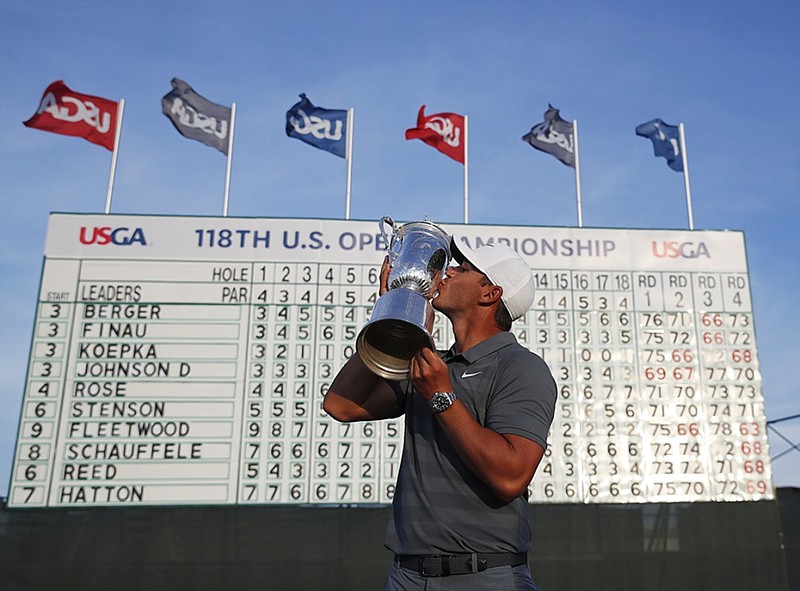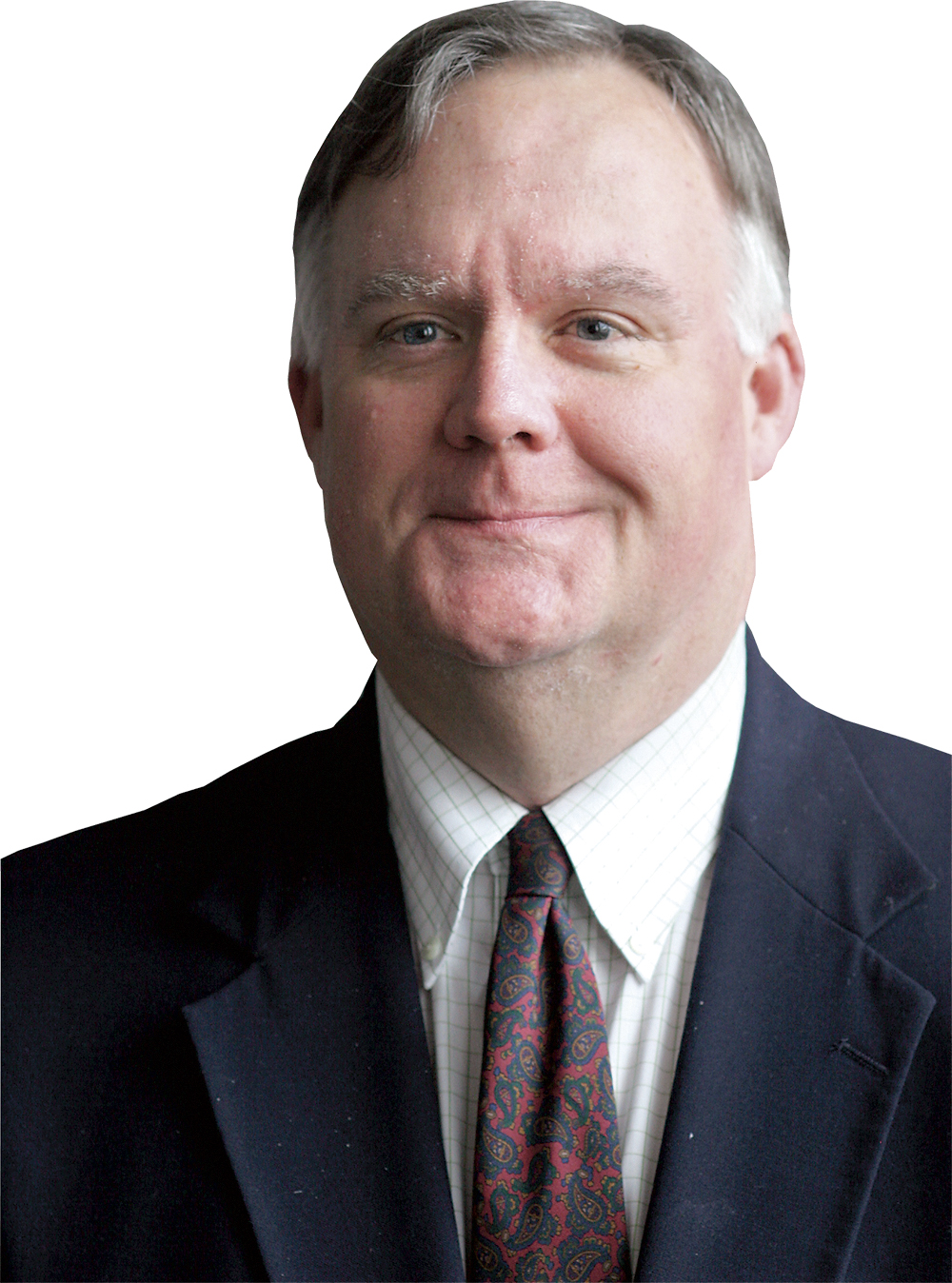Oh, the unfairness of it all. Having to dodge all that ridiculously tall, thick fescue. Having to attempt to keep that little dimpled white ball on those oil-slick greens. And the wind. When is the United States Golf Association going to build a giant, climate-controlled, wind-forbidden indoor course, complete with artificial turf, sugar-fine powder sand and bouncers to toss anyone uttering a discouraging word?
Isn't that the only fair venue on which to play the U.S. Open?
Doesn't anyone realize there needs to be a far less difficult, less stressful way to compete for that $2,160,000 winner's check Brooks Koepka earned for the second year in a row early Sunday evening at the minefield of a golf course known as Shinnecock Hills?
When the Loco Lefty formerly known as Phil Mickelson is given to running after his wayward putt, striking it as it rolls off the green, then gladly accepting a two-stroke penalty for such indefensible, ridiculous behavior, well, hasn't the USGA's Bogeys-R-Us course manipulation committee gone one step too far? Or three?
Or could it be that it all worked out precisely as it's supposed to? That Sunday became one of those perfect final-round tests requiring equal measures of patience and performance, discretion and dissection, brains and brawn.
Sure, it all looked hopelessly broken Saturday, when the world's best golfers - at least those who hadn't failed to make the cut Friday (so, so sorry Jordan Spieth and Tiger Woods) - looked as if they were trying to capture the fourth flight at the local muni course invitational.
Merely consider that Dustin Johnson - ranked No. 1 in the world entering this event - was 7 over par for Saturday alone. And he was far from the only one driving in reverse. For the day, only three golfers were under par, eight shot in the 80s - including Mickelson with an 81 and Rickie Fowler with an 84 - and the average score was more than five strokes over par.
No wonder Spanish golfer Rafa Cabrera-Bello, who shot a 76, tweeted afterward, in part: "It was not a fair test of golf. Greens were unplayable, with unnecessary pin positions. @USGA found a way to make us look like fools on the course. A pity they managed to destroy a beautiful golf course."
And somewhat amazingly, the USGA even seemed to agree, almost apologizing, which happens about as often as this tournament is suspended for a snowstorm.
"We missed it with the wind," USGA executive director Mike Davis told ESPN on Saturday night. "It blew harder than we thought it was going to blow. The greens got fast, and it was too much for the wind we had. At 15, you were seeing shots well-played, and they weren't rewarded. We would say it was a very tough test, but it was too tough this afternoon."
Wow. A U.S. Open that was too tough? The sky must be falling. Or maybe all these tour pros have become as soft as Charmin. Isn't a U.S. Open course supposed to be tougher to tame than a rabid rhino? Isn't it more about the last man standing than the last waltz?
But perhaps Davis was right. How else to explain Lefty losing his mind on No. 13, basically demanding a two-stroke penalty to up his total on the hole to 10 after his bizarre striking of a moving putt.
"Sometimes in these situations, it's just easier to take the two shots and move on," said Mickelson, who has never won the U.S. Open but has finished second six times. "I wanted to get to the next hole, and I didn't see that happening at that time without the two (penalty) shots."
(Note to kids: Don't try this in your amateur tournaments. Heck, don't try it, period. Or as Ian O'Connor wrote on ESPN.com Sunday morning: "Mickelson made a mockery of his sport's national championship on his 48th birthday, and he should now do the honorable thing and remove himself from the tournament.")
Lefty played on, of course, though he did call Davis later Saturday with an offer to withdraw. But despite his final round of 1-under 69, he became yesterday's news Sunday because the final round, some way, somehow, became the kind of dreamy drama we always hope for on Father's Day, filled with wonderful storylines, gritty golf and an altogether uncertain ending until the final group reached the final hole.
OK, so maybe Koepka pretty much wrapped it up on the next-to-last pairing. And maybe he won it at least partly because his good friend Johnson putted more like a 1-year-old than the world's No. 1. And because British golfer Tommy Fleetwood - who was striking the ball, particularly on the green, as sweetly as Fleetwood Mac ever struck a music note, firing a major tourney-tying round of 63 - couldn't make an eight-footer on No. 18 to get to the same 1-over score recorded by Koepka.
But that's golf. Particularly at our national championship. So let us happily salute the first back-to-back U.S. Open winner since Curtis Strange in 1989. Let us also salute Matt Parziale, the 30-year-old firefighter from Brockton, Massachusetts, who tied for low amateur at 16 over, which was the same score Mickelson shot.
Mostly, let us salute the fact the U.S. Open once more separated the men from the boys.
Or as Fox analyst Paul Azinger noted as at least one very big reason for Koepka's victory: "Obviously, he's got the physical skills. But if you don't have a good head on your shoulders, you might as well forget it."
And when you're competing for our country's national championship and a $2,160,000 payday, that's exactly as it should be.
Contact Mark Wiedmer at mwiedmer@timesfreepress.com.

